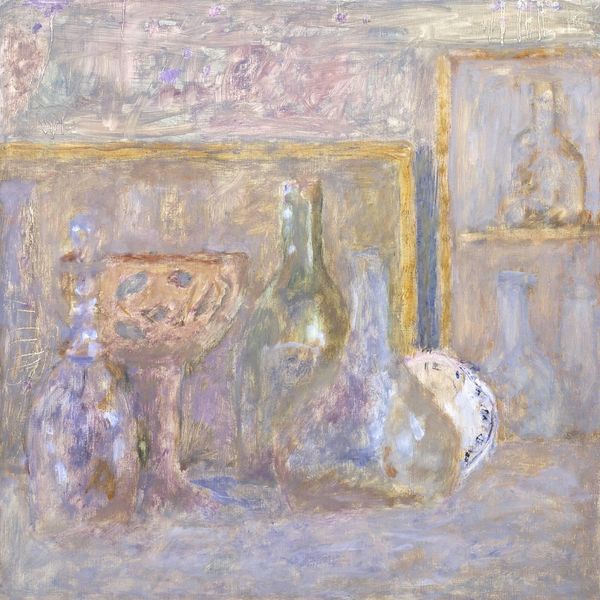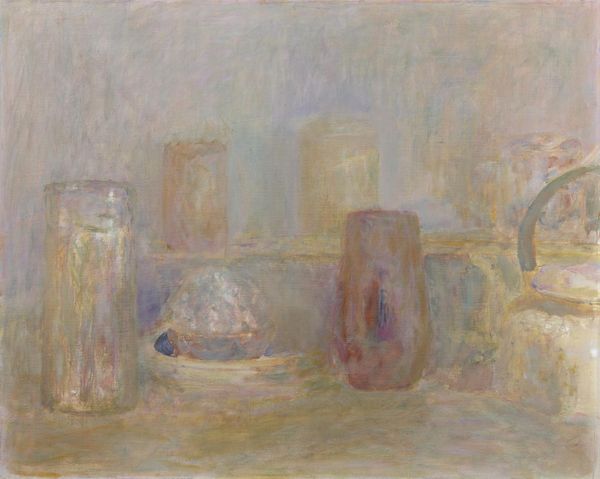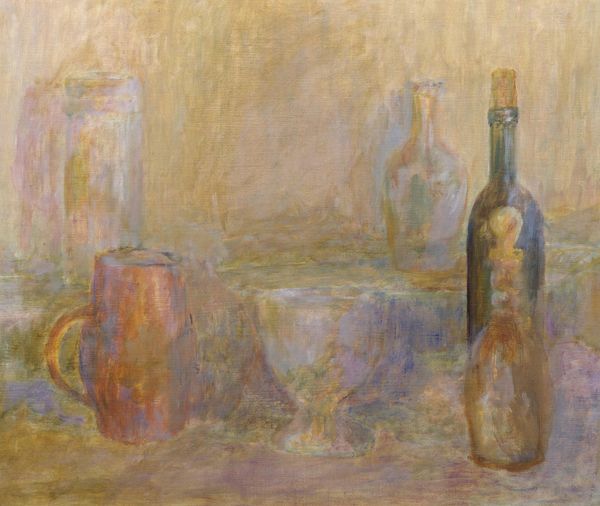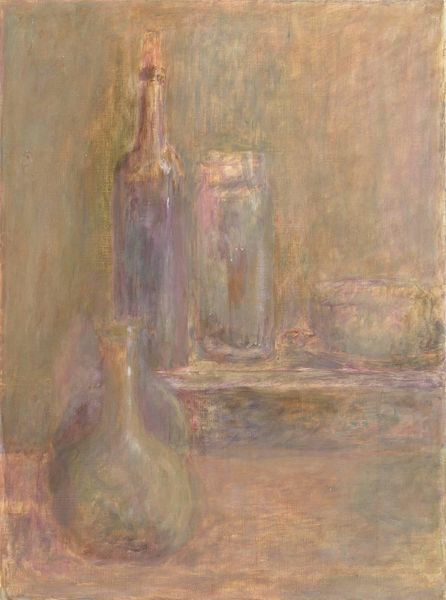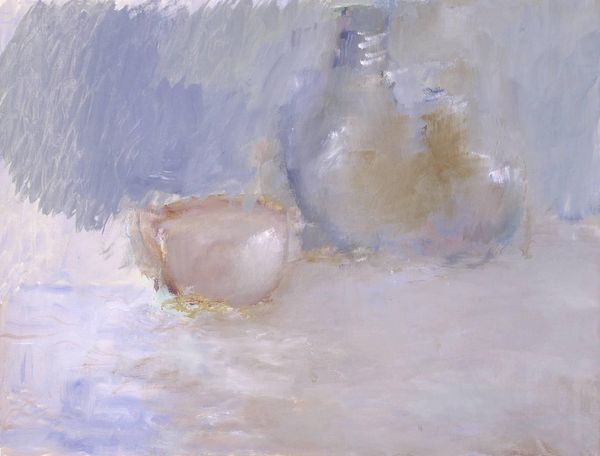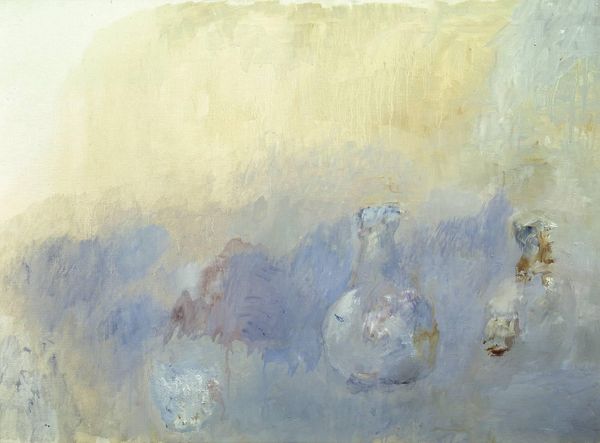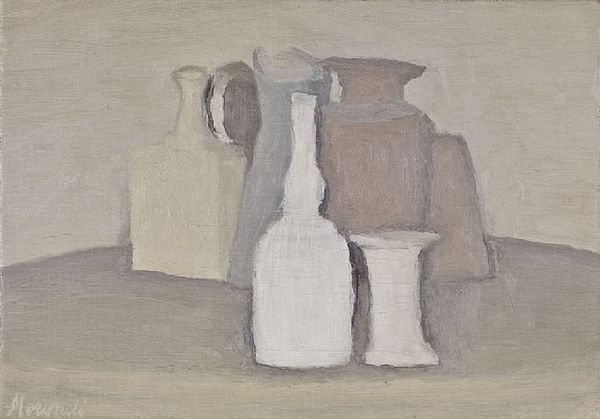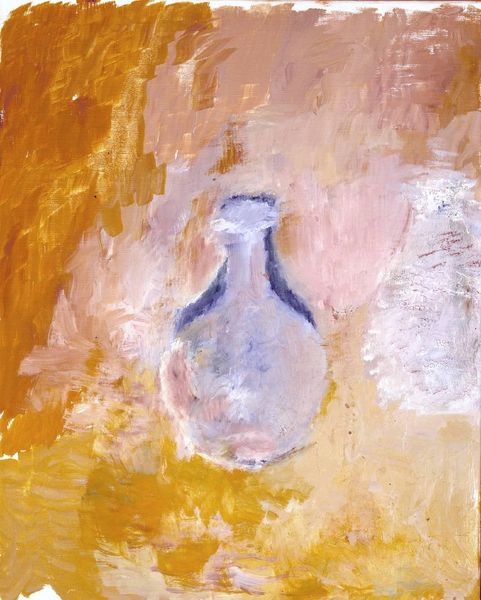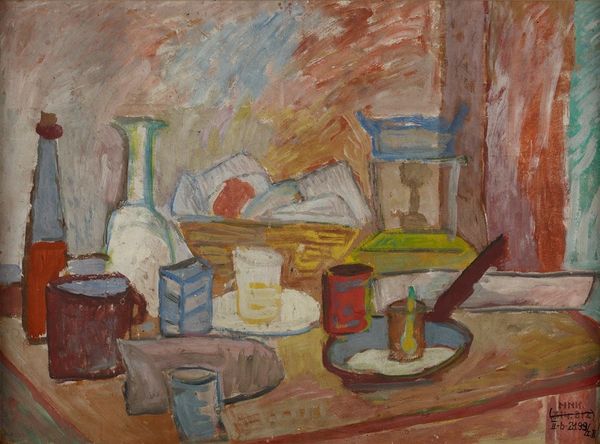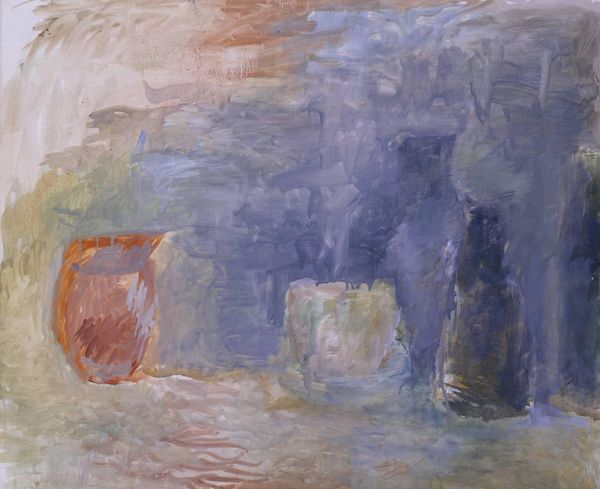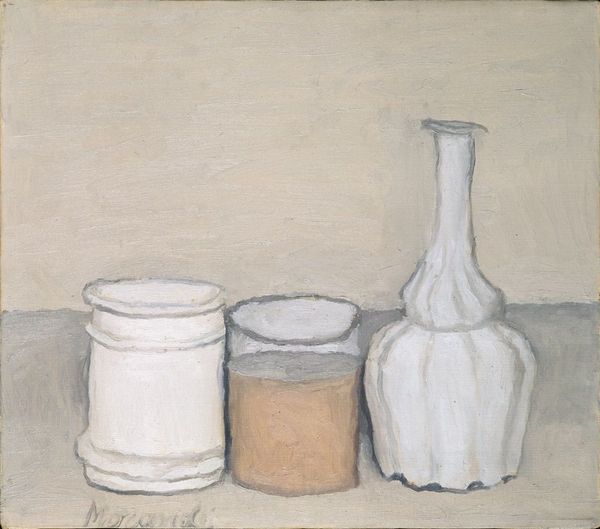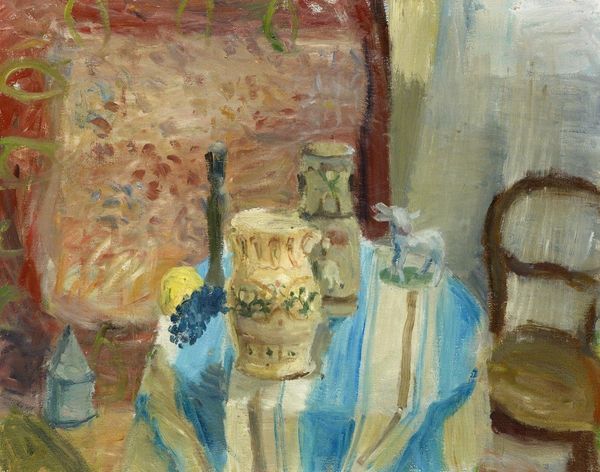
Dimensions: support: 505 x 707 x 18 mm
Copyright: © The estate of Adrian Stokes | CC-BY-NC-ND 4.0 DEED, Photo: Tate
Curator: This is Adrian Stokes' "Still Life," housed here at the Tate. Note the dimensions: approximately 50 by 70 centimeters. Editor: It feels like a memory fading. The soft hues and blurry edges... is it intended to evoke nostalgia? Curator: The visible brushstrokes contribute to this sensation, certainly. The composition adheres to a very simple structure; horizontal planes ground the placement of forms. Editor: These bottles... they are not glamorous objects. Was Stokes interested in elevating the mundane through art? Was there something about the post-war austerity? Curator: His focus appears to be less about elevating any object and more about capturing the nuances of light and form, the geometry inherent in everyday life. Editor: I see. The historical circumstances might have played a part, consciously or not. But the formal interplay of shapes and light is undeniable. Curator: Precisely. It's a lovely illustration of the aesthetic power of pure visual relationships. Editor: A quiet reflection, then, on seeing itself. Thanks for pointing that out.
Comments
Join the conversation
Join millions of artists and users on Artera today and experience the ultimate creative platform.
tate 6 months ago
⋮
Adrian Stokes is best known as the author of books and articles about modern art, particularly on Henry Moore (1898-1986), Ben Nicholson (1894-1982) and Barbara Hepworth (1903-1975), and on the appreciation of Italian Renaissance art and architecture (his namesake, the landscape painter Adrian Stokes 1854-1935, is no relation). He was also a painter of landscape, the nude and still life, depicting his subjects in even tones of warm browns and reds so that they appear indistinct. Stokes taught himself to paint in the 1930s as a practical extension of his criticism, and learnt also from his first wife, the abstract painter Margaret Mellis (born 1914). He exhibited in London in the 1950s and 60s, but remained a private artist, highly regarded among a circle of intellectuals, but not generally known, and with sufficient private means not to need to sell his work. His writing is abstract and psychoanalytical, concerned with the perception of form. He was a keen admirer of Melanie Klein (1882-1960) whose psychoanalytical thinking informed Stokes's writing. Late in his life he wrote approvingly of Turner, in a way that might describe his own painting, 'There is a long history of indistinctness in Turner's art, connected with what I have called an embracing or enveloping quality, not least of the spectator with the picture' ('Painting and the Inner World', Gowing, III, p.237). Stokes's paintings depict objects whose substance is rendered indistinct by broken brushwork that conveys a lambent light, dissolving the distinction between form and ground. In 2001 Tate was bequeathed a group of eight of Stokes's paintings by his friend and admirer, the critic David Sylvester (1924-2001). He had previously lent them in 1993 to Tate's annual 'New Displays' of the Collection, a procedure newly devised in 1990 by the Gallery's director Nicholas Serota, and Sylvester subsequently asked that this bequest should be named in his honour. In 1968 Sylvester had dedicated his catalogue for the Arts Council Henry Moore exhibition to Adrian Stokes. Further reading:Adrian Stokes 1902-72, A retrospective, exhibition catalogue, Serpentine Gallery, London 1982.Lawrence Gowing, ed., The Critical Writings of Adrian Stokes, London, l-III, 1978. David JenkinsFebruary 2002

